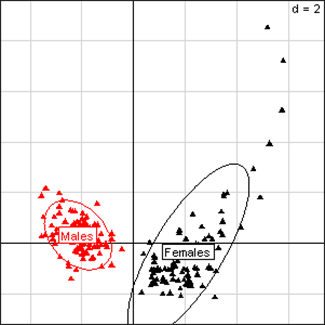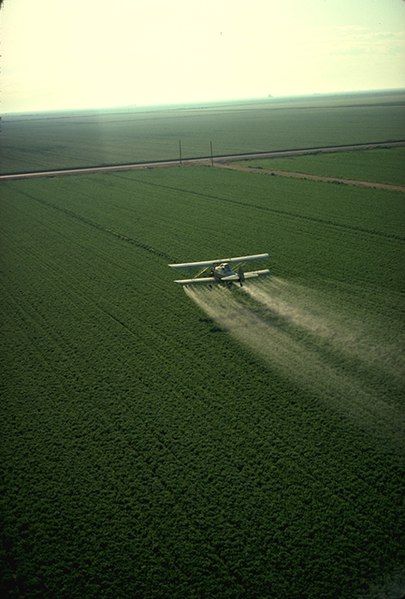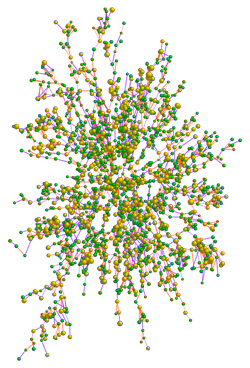The two men started publishing their findings with a splash: a 2007 article in the New England Journal of Medicine reporting that obesity spreads through social networks, as people are apparently influenced by friends’ weight gain to become obese themselves. More perplexing is their finding that obesity spreads through up to three degrees of separation. If a subject named a friend who was also in the study, and that friend’s friend became obese, the first subject’s chances of becoming obese were roughly 20 percent greater. Across one more degree of influence (husband’s friend’s friend or friend’s sibling’s friend—i.e., three degrees away), the risk was 10 percent greater. Weight gain appears to ripple through friend groups via some unseen mechanism such as altered eating or exercise behavior, or adjustment of social norms regarding weight.We are our brother’s keeper, and our brothers, sisters, aunts, uncles, parents, children, friends, colleagues, and neighbors are our keepers.The authors found similar patterns for happiness, loneliness, depression, alcohol consumption, the decision to stop smoking, and even divorce. “Our health depends on more than our own biology or even our own choices and actions,” they write in Connected. “Our health also depends quite literally on the biology, choices, and actions of those around us.”
Category Archives: Science
HFCS downfall?
 Let’s hope Melanie Warner, writing in bnet, is right about
The Death of High Fructose Corn Syrup:
Let’s hope Melanie Warner, writing in bnet, is right about
The Death of High Fructose Corn Syrup:
The back-to-back, double whammy announcements that PepsiCo (PEP) is ditching high fructose corn syrup in Gatorade along with the results of a scathing new study from researchers at Princeton make it official — allies of the controversial sweetener have lost the war.
What the Princeton researchers found was
A sweet problem: Princeton researchers find that high-fructose corn syrup prompts considerably more weight gain,
as we noted here a while back.
And, as we noted last year, there’s also
an eerie correlation of the spread of
HFCS into the food supply with the rise of obesity in the U.S.

Here’s Melanie Warner again, this time in the New York Times:
Hunt’s ketchup is among the latest in a string of major-brand products that have replaced the vilified sweetener. Gatorade, several Kraft salad dressings, Wheat Thins, Ocean Spray cranberry juice, Pepsi Throwback, Mountain Dew Throwback and the baked goods at Starbucks, to name a few, are all now made with regular sugar.
Why is Big Food buckling about bogus sugar?
What started as a narrow movement by proponents of natural and organic foods has morphed into a swell of mainstream opposition, thanks in large part to tools of modern activism like Facebook, YouTube and Twitter and movies like “Food, Inc.” and “King Corn.”Well, well. Voting at supermarket checkout seems to be working after all!
Liver and kidney damage: GM crops
A report published in the International Journal of Microbiology has verified once again that Monsanto’s genetically modified (GM) crops are causing severe health problems. A legal challenge issued against Monsanto forced the multi-national agriculture giant to release raw data revealing that animals fed its patented GM corn suffered liver and kidney damage within just three months.Adding to the mounting evidence that GM crops are dangerous all around, this information provides a damning indictment against Monsanto which continually insists that its GM products are safe. Not only are GM crops proving disastrous for the environment, but study after study, including those conducted by Monsanto itself, is showing that GM foods are detrimental to health.
This appears to be a publication in another venue of the same results we remarked on a couple of months ago. Still bad news for Monsanto.
But they’ve got nothing to hide, right?
Monsanto only released the raw data after a legal challenge from Greenpeace, the Swedish Board of Agriculture and French anti- GM campaigners.Oh. Nevermind.
Maybe Monsanto really is the least ethical company in the world.
Mutant Pigweed vs. Glysophate-Resistant Corn, Soybeans, and Cotton
 It’s a funny thing about monocultures. They’re highly vulnerable to anything
that affects that particular variety.
Dr. Mae-Wan Ho writes:
It’s a funny thing about monocultures. They’re highly vulnerable to anything
that affects that particular variety.
Dr. Mae-Wan Ho writes:
The scene is set at harvest time in Arkansas October 2009. Grim-faced farmers and scientists speak from fields infested with giant pigweed plants that can withstand as much glyphosate herbicide as you can afford to douse on them. One farmer spent US$0.5 million in three months trying to clear the monster weeds in vain; they stop combine harvesters and break hand tools. Already, an estimated one million acres of soybean and cotton crops in Arkansas have become infested.The palmer amaranth or palmer pigweed is the most dreaded weed. It can grow 7-8 feet tall, withstand withering heat and prolonged droughts, produce thousands of seeds and has a root system that drains nutrients away from crops. If left unchecked, it would take over a field in a year.
Meanwhile in North Carolina Perquimans County, farmer and extension worker Paul Smith has just found the offending weed in his field [3], and he too, will have to hire a migrant crew to remove the weed by hand.
Here’s the good news: Continue reading
Monsanto Corn Causes Liver and Kidney Damage in Rats
 The researchers used Monsanto’s own data, which was for a period
of ingestion of only 90 days, and
reached these conclusions:
The researchers used Monsanto’s own data, which was for a period
of ingestion of only 90 days, and
reached these conclusions:
We therefore conclude that our data strongly suggests that these GM maize varieties induce a state of hepatorenal [liver and kidney] toxicity. This can be due to the new pesticides (herbicide or insecticide) present specifically in each type of GM maize, although unintended metabolic effects due to the mutagenic properties of the GM transformation process cannot be excluded [42]. All three GM maize varieties contain a distinctly different pesticide residue associated with their particular GM event (glyphosate and AMPA in NK 603, modified Cry1Ab in MON 810, modified Cry3Bb1 in MON 863).Why should GM foods have this sort of effect?
These substances have never before been an integral part of the human or animal diet and therefore their health consequences for those who consume them, especially over long time periods are currently unknown.Humans generally have centuries of experience with most other foods, and have rejected or developed appropriate preparation methods for those that are toxic.
Plus until recently humans weren’t in the habit of eating pesticides that had been deliberately engineered to be toxic to other species. Especially without testing first to see if they might be toxic to humans….
One of the four authors of this research paper in the peer-reviewed International Journal of Biological Sciences, Gilles-Eric Seralini, had already established that Glyphosate Formulations Induce Apoptosis and Necrosis in Human Umbilical, Embryonic, and Placental Cells. In other words, RoundUp causes human birth defects. So if Monsanto’s pesticide doesn’t get you or your children directly, it can still get you in your food. And maybe not just in food containing corn, given that chickens fed feed including Monsanto corn show abnormal gene expression. Maybe somebody will study people who eat chickens fed Monsanto corn and see what effects that has.
But remember, while the evidence mounts that Monsanto is poisoning the world’s food supply, Forbes just named Monsanto company of the year! All this other stuff is just economic externalities, and profit is all that matters!
The World Inside Monsanto
 In
a review of the 2008 film, The World According to Monsanto,,
Kimberley D. Mok remarks:
In
a review of the 2008 film, The World According to Monsanto,,
Kimberley D. Mok remarks:
The film documents the beginnings of the company as a chemical start-up in the early 1900s, producing saccharin, caffeine and vanillin. As we watch Robin Google up unclassified documents and interview a bevy of officials, scientists and farmers, we see that today’s Monsanto is a giant multinational wielding its considerable financial, political and marketing clout to influence government officials, ruthlessly sue farmers using patent laws – all the while surreptitiously lobbying to keep their potentially toxic products unlabelled or falsely advertised.The future? Already Monsanto seeds grow 93% of soybeans and 80% of corn in the U.S. and people claim “we couldn’t do agriculture in Argentina” without RoundUp. The Biotechnology Industry Organization even claims that the popularity of herbicide-resistant crops showed their value outweighs any associated detriments.Monsanto claims that their genetically modified seeds will solve the food crisis, especially in developing countries, where it will provide significant economic benefits, higher quality and better yield. Nevertheless, the film compellingly shows the unsettling possibilities of genetic contamination of conventional or local varieties of seeds by their genetically-engineered cousins, pointing to a horrific future where global plant biodiversity is nil and farmers are not able to grow anything but genetically contaminated food.
Any associated detrimeents, such as birth defects or sickness in animals and humans.
Nevermind that organic farming yields are often better than with agrochemicals.
Surely the company that brought us DDT (banned by U.S. Congress 1972), Agent Orange (Agent Orange Act of 1991 makes U.S. veterans exposed to it eligible for treatment and compenstation), and PCBs (“CONFIDENTIAL: Read and Destroy”) wouldn’t soak the world in anything toxic?
Pesticides more valuable than “any associated detriments”?
 Pesticide use is not just bad, it’s getting rapidly worse, according to
Carey Gillam writing in Scientific American:
Pesticide use is not just bad, it’s getting rapidly worse, according to
Carey Gillam writing in Scientific American:
The rapid adoption by U.S. farmers of genetically engineered corn, soybeans and cotton has promoted increased use of pesticides, an epidemic of herbicide-resistant weeds and more chemical residues in foods, according to a report issued Tuesday by health and environmental protection groups.What’s the cause of this increased pesticide use?The groups said research showed that herbicide use grew by 383 million pounds from 1996 to 2008, with 46 percent of the total increase occurring in 2007 and 2008.
The report was released by nonprofits The Organic Center (TOC), the Union for Concerned Scientists (UCS) and the Center for Food Safety (CFS).
The rise in herbicide use comes as U.S. farmers increasingly adopt corn, soy and cotton that have been engineered with traits that allow them to tolerate dousings of weed killer. The most popular of these are known as “Roundup Ready” for their ability to sustain treatments with Roundup herbicide and are developed and marketed by world seed industry leader Monsanto Co.Any associated detriments? Dead and mutated wildlife? Poisoned drinking water? Pesticides in school children? Cancer and asthma? Well, I suppose those are all economic externalities of no interest to the producers of these seeds and pesticides.Monsanto rolled out the first biotech crop, Roundup Ready soybeans, in 1996.
Monsanto officials declined to comment on the report. But the Biotechnology Industry Organization, of which Monsanto is a member, said the popularity of herbicide-resistant crops showed their value outweighs any associated detriments.
Graphs: HCFS and Obesity
 Almost as many obese as healthy weight adults in the U.S., and the rest are overweight. Something changed starting about 1980.
Data source: Centers for Disease Control and Prevention (2005) Health, United States, 2005.
Graph source: Wikipedia
Almost as many obese as healthy weight adults in the U.S., and the rest are overweight. Something changed starting about 1980.
Data source: Centers for Disease Control and Prevention (2005) Health, United States, 2005.
Graph source: Wikipedia While the percentage of the U.S. population considered overweight has been stable since 1960-62, the percentage considered obese has more than doubled.What happened? Continue reading
“We couldn’t do agriculture in Argentina”
A group of environmental lawyers has petitioned the Supreme Court to impose a six-month ban on the sale and use of glyphosate, which is the basis for many herbicides, including the US agribusiness giant Monsanto’s Roundup product.My, that’s rather apocalyptic!A ban, if approved, would mean “we couldn’t do agriculture in Argentina”, said Guillermo Cal, executive director of CASAFE, Argentina’s association of fertiliser companies.
And financially even worse:
Any ban on the use of glyphosate could have dire fiscal consequences: the already cash-strapped Argentine government relies heavily on tariffs levied on agricultural exports. It is expected to rake in some $5bn this year, although that is about half the previous year’s level after a longrunning conflict with farmers, a bitter drought and lower prices have slashed production of the country’s main cash crop, soya.Or is it?
Mr Carrasco acknowledged there were “too many economic interests at stake” to ban glyphosate outright. But, he said, officials could start ring-fencing the problem by enforcing effective controls where crops are sprayed.That would be a start. Working on other methods of weed and insect control would be even better.
The Financial Times does mention that there are Argentine studies that support Dr. Carrasco’s as-yet-unpublished study:
Research by other Argentine scientists and evidence from local campaigners has indicated a high incidence of birth defects and cancers in people living near crop-spraying areas. One study conducted by a doctor, Rodolfo Páramo, in the northern farming province of Santa Fé reported 12 malformations per 250 births, well above the normal rate.Yet the Financial Times did not mention the numerous scientific studies in other countries that show similar results.
Monsanto is worldwide, after all.
Glysophate Effects on Humans: International Studies
For example, French scientists, Drs. Seralini and Benacour, have published a number of scientific papers about the harmful effects of Roundup and its ingredients on human embryonic and placental cells. A Swedish scientific team lead by Dr. Akerman published an epidemiological study disclosing that exposure to glyphosate is a risk factor for developing Non-Hodgkin lymphoma. Dr. Busbee – an American scientist – demonstrated alterations in estrogen-regulated genes after exposure to dilute concentrations of glyphosate.
 Nora Benachour and Gilles-Eric Sralini report in
Chem. Res. Toxicol., 2009, 22 (1), pp 97–105 about
Glyphosate Formulations Induce Apoptosis and Necrosis in Human Umbilical, Embryonic, and Placental Cells:
Nora Benachour and Gilles-Eric Sralini report in
Chem. Res. Toxicol., 2009, 22 (1), pp 97–105 about
Glyphosate Formulations Induce Apoptosis and Necrosis in Human Umbilical, Embryonic, and Placental Cells:
We have evaluated the toxicity of four glyphosate (G)-based herbicides in Roundup (R) formulations, from 105 times dilutions, on three different human cell types. This dilution level is far below agricultural recommendations and corresponds to low levels of residues in food or feed. The formulations have been compared to G alone and with its main metabolite AMPA or with one known adjuvant of R formulations, POEA. HUVEC primary neonate umbilical cord vein cells have been tested with 293 embryonic kidney and JEG3 placental cell lines. All R formulations cause total cell death within 24 h, through an inhibition of the mitochondrial succinate dehydrogenase activity, and necrosis, by release of cytosolic adenylate kinase measuring membrane damage.And it gets even better:
The deleterious effects are not proportional to G concentrations but rather depend on the nature of the adjuvants. AMPA and POEA separately and synergistically damage cell membranes like R but at different concentrations. Their mixtures are generally even more harmful with G. In conclusion, the R adjuvants like POEA change human cell permeability and amplify toxicity induced already by G, through apoptosis and necrosis. The real threshold of G toxicity must take into account the presence of adjuvants but also G metabolism and time-amplified effects or bioaccumulation.Glysophate makes other chemicals even more toxic, and remember Glysophate doesn’t break down rapidly and tends to accumulate in organisms. Organisms such as you and your children.
